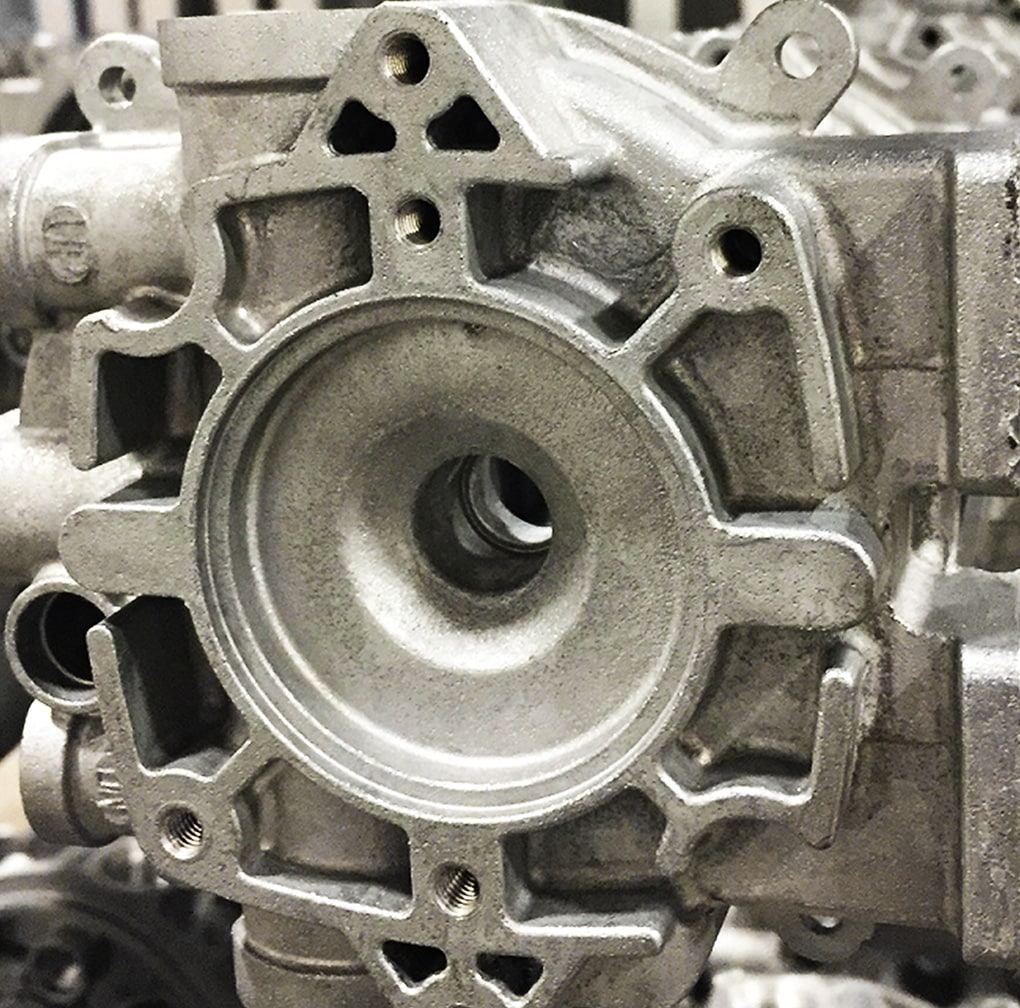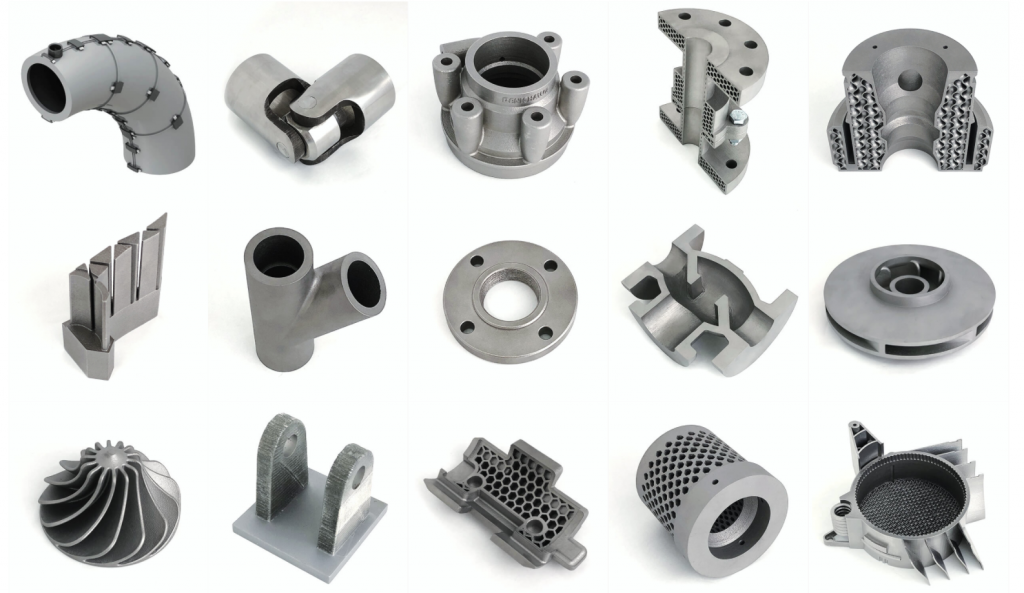Uncovering the Conveniences and Practical Use Aluminum Castings in Today's Market
Light weight aluminum castings have come to be progressively pertinent in different industries as a result of their unique attributes. Their light-weight nature and resistance to deterioration make them appropriate for demanding applications. Furthermore, the remarkable strength-to-weight ratio uses substantial advantages in style and manufacturing. As sectors continue to discover their capacity, the complete extent of aluminum spreadings' advantages and applications continues to be to be fully revealed. What lies ahead for this functional material?
The Lightweight Benefit of Aluminum Castings
Numerous products are made use of in manufacturing, aluminum castings stand out mostly due to their lightweight buildings. This characteristic makes light weight aluminum castings an appealing selection for various sectors, particularly in aerospace and automobile applications, where weight decrease is vital for boosting fuel performance and efficiency. The light-weight nature of aluminum allows manufacturers to create parts that are less complicated to install and manage, eventually minimizing labor expenses.
The ability to produce intricate forms without substantial weight fines enables developers to introduce while keeping structural integrity. Aluminum spreadings can properly change much heavier products, causing substantial savings in shipping and functional prices. Their light-weight advantage additionally adds to boosted item durability, as lighter components commonly lead to lowered damage on equipment. In general, the lightweight residential or commercial properties of aluminum spreadings give makers with an one-upmanship, promoting improvements in product layout and performance across numerous markets.

Outstanding Rust Resistance
Aluminum spreadings have an all-natural resistance to oxidation, which substantially improves their durability in various settings. This integral building not just adds to their resilience but also aligns with the lightweight advantage that aluminum offers. Therefore, aluminum castings are significantly acknowledged for their extraordinary deterioration resistance in many applications.

Normally Immune to Oxidation
Among the standout features of light weight aluminum castings is their extraordinary rust resistance, which originates from an all-natural oxidation process. When exposed to air, light weight aluminum responds to develop a slim, protective layer of aluminum oxide. This layer works as an obstacle against further oxidation and protects the underlying steel from destructive elements such as dampness and salts. Unlike various other metals, this oxide layer is self-repairing; if damaged, it promptly reforms when subjected to air. This distinct residential or commercial property enhances the long life of aluminum castings in different environments, making them ideal for applications in markets such as aerospace, automotive, and marine. As a result, the all-natural resistance to oxidation substantially reduces upkeep expenses and increases the dependability of aluminum castings sought after problems.
Light-weight Durability Advantage
The light-weight nature of aluminum castings adds greatly to their durability, making them a helpful selection in different sectors. This outstanding longevity is largely credited to aluminum's natural resistance to corrosion, which is boosted further through anodizing and other surface treatments. Unlike several metals, aluminum does not rust; instead, it forms a protective oxide layer that shields it from ecological damage. This property is particularly useful in fields such as automotive and aerospace, where weight reduction is critical without jeopardizing stamina. In addition, the long life of light weight aluminum castings lessens upkeep prices and substitutes, providing economic benefits with time. Their light-weight durability and corrosion resistance position aluminum spreadings as a premium product for modern-day production applications.

Superior Strength-to-Weight Proportion
A remarkable quality of light weight aluminum spreadings is their superior strength-to-weight ratio, which makes them extremely desirable in different applications. This inherent residential property allows light weight aluminum spreadings to hold up against significant stress and anxiety while continuing to be lightweight, an important consider sectors such as aerospace, auto, and production. Engineers typically choose light weight aluminum castings for parts that call for both toughness and decreased weight, improving fuel effectiveness and efficiency.
The high strength-to-weight ratio also assists in the style of complex shapes and structures, making aluminum spreadings functional for complex applications. Furthermore, the capacity to preserve structural integrity under difficult problems guarantees long life and integrity in products, from aircraft structures to auto components. This advantage adds to the expanding trend of making use of aluminum spreadings in ingenious layouts, eventually resulting in boosted functionality and performance across varied industries. The exceptional strength-to-weight proportion of aluminum spreadings places them as a pivotal product in modern design and production.
Cost-Effectiveness in Production
Cost-effectiveness in light weight aluminum spreading production is mostly achieved with lowered material waste and reliable production procedures. By optimizing layouts and utilizing sophisticated strategies, makers can reduce excess material usage while keeping top quality criteria. This approach not just decreases manufacturing expenses however also contributes to more lasting techniques within the industry.
Decreased Product Waste
Lowering material waste in light weight aluminum spreading processes significantly improves manufacturing performance. By optimizing the style and production strategies, firms can decrease excess scrap and improve resource use. This decrease in waste not just decreases product prices yet also adds to a much more sustainable production design. The capability to reuse light weight aluminum more assistances cost-effectiveness, permitting suppliers to redeem and recycle products without jeopardizing high quality. As the market progressively focuses on sustainability, decreased product waste lines up with environmental goals while at the same time increasing success. Ultimately, efficient use basic materials strengthens the affordable setting of companies out there, making aluminum castings a desirable alternative in various applications. The calculated approach to minimizing waste mirrors a commitment to both economic and environmental duty.
Effective Manufacturing Processes
While traditional manufacturing processes can sustain considerable costs, light weight aluminum spreading offers a more reliable alternative that improves general manufacturing success. This method lessens product waste and enables for exact control over the manufacturing procedure, causing reduced labor and functional expenses. The ability to generate complicated forms with fewer actions even more improves manufacturing, adding to shorter preparations. Additionally, light weight aluminum's lightweight nature and exceptional thermal conductivity allow for power savings during manufacturing and in the last application. By using modern-day casting innovations, manufacturers can accomplish higher throughput without giving up quality. As a result, light weight aluminum casting sticks out as a cost-effective service, making it an eye-catching option for services intending to optimize their production procedures in today's competitive market.
Adaptability Across Industries
Aluminum castings show remarkable flexibility across numerous sectors, as they can be tailored to meet particular demands and applications. In the vehicle industry, light weight aluminum spreadings are utilized in engine blocks, transmission real estates, and wheels, using light-weight yet durable options that boost gas performance. The aerospace sector additionally takes advantage of aluminum spreadings, utilizing them in architectural elements and engine components because of their strength-to-weight ratio.
In the durable goods field, makers employ light weight aluminum spreadings for items ranging from cookware to furniture, offering both aesthetic appeal and performance. The electronic devices sector makes use of light weight aluminum castings for housings and warmth sinks, making certain effective thermal management. In addition, the building and construction market leverages aluminum spreadings for building aspects wikipedia reference and structural components, improving toughness and style flexibility. This wide applicability highlights aluminum castings as a crucial source, satisfying the diverse requirements of various markets while keeping high performance and dependability.
Sustainability and Ecological Effect
As markets increasingly focus on sustainable techniques, light weight aluminum castings become an environmentally friendly selection because of their recyclability and reduced environmental impact. Aluminum is just one of the most recycled products worldwide, with the ability to be repurposed numerous times without destruction of high quality. This particular considerably minimizes the demand for raw products and energy intake great post to read connected with key aluminum production, which is energy-intensive.
Furthermore, light weight aluminum castings add to light-weight designs, bring about sustain efficiency in transport applications such as auto and aerospace sectors. Their resilience and resistance to corrosion prolong product life expectancies, further decreasing waste and source usage over time. Additionally, lots of makers are adopting liable sourcing and eco friendly manufacturing approaches, improving the sustainability of light weight aluminum spreading procedures. Overall, aluminum castings represent a useful service for services aiming to decrease their ecological influence while achieving performance and effectiveness.
Technologies in Light Weight Aluminum Spreading Technologies
Recent advancements in aluminum spreading modern technologies have actually significantly enhanced the efficiency and high quality of manufacturing processes. Innovations such as 3D printing and progressed mold-making methods have made it possible for manufacturers to create detailed styles with reduced product waste. This shift not just enhances the precision of actors elements but also reduces lead times, enabling quick prototyping and faster market entry.
Moreover, the unification of advanced computer system simulations aids in predicting possible problems throughout casting, leading to higher-quality outcomes (Aluminum Foundry). Making use of lightweight alloys has actually also added to the advancement of stronger, a lot more durable products, dealing with industries ranging from automotive to aerospace
Additionally, click site automated spreading procedures have emerged, decreasing human mistake and boosting manufacturing rate. Jointly, these advancements are transforming the light weight aluminum spreading landscape, driving greater competitiveness and sustainability in manufacturing. As industries proceed to develop, these modern technologies will certainly play a vital duty in conference future demands for effectiveness and high quality.
Regularly Asked Questions
How Do Aluminum Castings Compare to Other Metals in Regards To Thermal Conductivity?
Light weight aluminum spreadings show superior thermal conductivity contrasted to many metals, such as steel and iron - Aluminum Foundry. Their light-weight nature and reliable warmth circulation make them excellent for applications requiring effective thermal management in various industries
What Are the Typical Problems Located in Light Weight Aluminum Castings?
Common defects in aluminum spreadings consist of porosity, contraction, additions, and surface irregularities. These problems typically develop from incorrect cooling rates, inadequate mold layout, or contaminations, impacting the overall quality and efficiency of the end product.
Can Aluminum Castings Be Recycled, and Exactly how?
Aluminum castings can be reused efficiently. The process includes collecting, melting, and changing the light weight aluminum, which lessens waste and saves resources. This recycling contributes to sustainability while keeping the product's buildings for future usage.
What Are the Normal Lead Times for Aluminum Casting Production?
Commonly, lead times for light weight aluminum spreading production range from 2 to 6 weeks, relying on elements such as complexity, tooling demands, and production volume. Effectiveness can improve with recognized supplier partnerships and enhanced production procedures.
How Does the Surface Area Complete Affect Aluminum Casting Performance?
The surface area coating substantially affects aluminum casting efficiency by influencing corrosion resistance, visual high quality, and friction qualities. A smoother surface enhances longevity and capability, while a rougher structure can boost adhesion for succeeding finishings or therapies.
Numerous products are used in manufacturing, light weight aluminum castings stand out mainly due to their light-weight homes. When revealed to air, aluminum reacts to create a thin, safety layer of light weight aluminum oxide. Cost-effectiveness in aluminum casting manufacturing is largely achieved via reduced material waste and effective production procedures. Decreasing material waste in light weight aluminum casting processes considerably boosts production efficiency. Inevitably, reliable use of raw materials enhances the affordable placement of organizations in the market, making aluminum spreadings a positive choice in different applications.